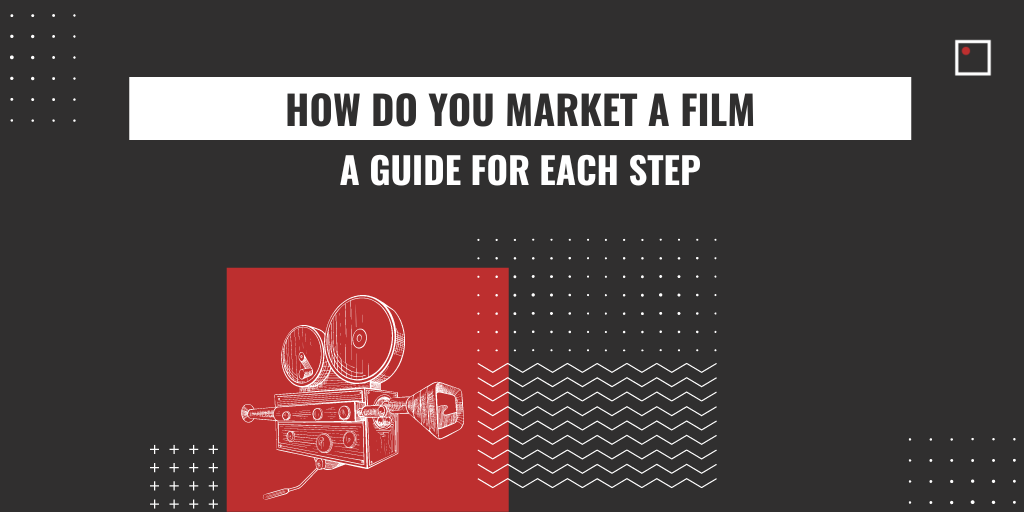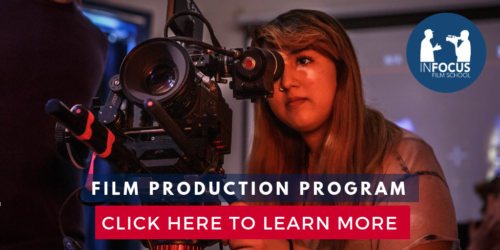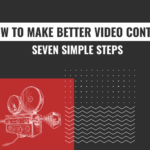How Do You Market A Film? A Guide for Each Stage Of Production
How Do You Market A Film?

Written by Tae Haahr
Marketing is the most underrated aspect of the filmmaking process. It comes from a combination of wanting to get the film right, having a ton of things to consider and the fact that most people don’t know how to put together an impactful campaign.
But in filmmaking, marketing is a crucial component. With hundreds of thousands of films created each year—in all shapes, sizes and genres, if you want to get your film seen, marketing needs to be a priority.
So, when do you need to start thinking about marketing? The answer is simple: during the entire process. But there are five specific times that marketing needs to be in the forefront of your mind.
The Initial Plan
Marketing your film starts at the beginning. When you’re in your very first production meeting, it needs to be on the agenda. While marketing seems like a “later” problem for when the film’s complete, a film that’s not created with marketing in mind is a film that probably won’t get seen.
When you’re talking about marketing in this initial stage you’re looking at two things: what kind of marketing do you think you want to do and what size of budget do you need to put together to get it done right. Note that submitting to film festivals is one of the biggest marketing steps for an independent film and your marketing budget needs to take into account submissions fee and the cost of putting together an engaging press kit.
You’ll also want to think about digital marketing components like websites and social media, traditional print campaigns like posters and banners, larger scale public marketing like paid advertising or even holding an event, and even things like public relations and press coverage ideas.
Simply thinking about marketing in the beginning will help make sure it continues to be on your mind throughout the process. And putting marketing as a line-item on your budget will help ensure there’s at least some money for it.
During the Bid for Funding
I’m going to take a wild guess that you don’t have a few million dollars burning a hole in your pocket that you can put towards creating your next film masterpiece. That means you’ll be bidding for funding—whether through a grant, private sources or otherwise.
Most granting programs and funding sources will not even consider an application, let alone grant funding, if there isn’t a marketing plan included. Which means marketing has to be part of the application process. The same can be said for private donors. They’re unlikely to be motivated to invest in your film project if you have no marketing plan. Without it, there’s next to no possibility for them to see a return on that investment.
Creating a marketing plan at this stage is a lot easier if you’ve already done some brainstorming and researching during the initial stage. Unless something specific is stated by the funding body or funder, your marketing plan simply has to answer the who, what, where, when and why of your marketing.
Here’s an idea of what they’re looking for:
- Who on the team is going to spearhead your marketing?
- What tactics are you going to use to reach your audience (ex. Instagram or build a website).
- Where will it take place—if you’re going to throw a local premiere, run a press conference or even just attend film festivals, you have a where. If not, you “where” is likely online.
- When do the different components of your marketing plan take place.
- Why did you pick these specific tactics as opposed to. Talking about your why means that you have to be familiar with your target audience before you pick your tactics.
The final thing to note is that the people who will be reading it understand that you’re a filmmaker and not a professional marketer. They aren’t looking for some big masterpiece, they just want to know that it’s included in the process.

On Set
While the purpose of being on set is to actually create the film, you cannot forego the marketing plan during this process. In fact, during the production phase is when you’ll get the majority of the raw content for your marketing campaign. Not to mention, you have most of the people associated with the project on-site. If you want them to participate in the marketing process, chances are you need to get to them now.
What do we mean by raw content? Raw content includes behind the scenes photos and videos, interviews with the cast and crew, audio clips, character and set photos, pretty much anything that needs to be obtained for marketing purposes later down the line. During the production phase, your job is simply to capture this material—as in most cases this is your only opportunity.
Depending on the size of your production, this work might be done by a publicist whose job is to gather content for the marketing campaign. But if you’re on a tighter budget set, chances are this will have to be done by someone who’s also doing something else.
During Post Production
Post production is when you get to take your raw content and create ready-to-release marketing material. This can include anything and everything from social media posts and website content to behind the scenes footage and interviews. Anything you want to use to promote your film is made at this point.
Two very important components of marketing are made during the post production phase: the trailer and the festival press kit. The job of both of these components is to entice people to get interested in your film. Your trailer offers tidbits of the film to your audience, enticing them to see the film. A press kit includes your film synopsis, poster, press, stars, and more. Make sure to include interesting anecdotes about your film that journalists would find interesting. If you don’t know how to make a press kit, a simple Google search should get the ball rolling.
You will also be starting to run your actual marketing campaign during this phase. You want to build buzz around your film before it’s even complete. This way, when you release your trailer or you get into a film festival, people are excited.
The Blair Witch Project had one of the most successful viral film marketing campaigns of all time. It is successful because created a compelling story that pulls at people’s heartstrings. It created intrigue in audiences, whether or not the film was “real.” The film created the “found footage” genre.
Filmmakers have been recreating parts of the campaign since 1999, with two recent examples being Paranormal Activity who ran a similar “is it real/is it not” trailer series and A Simple Favor who “disappeared” Blake Lively from Instagram.
You want your marketing campaign to be unique, but you don’t have to reinvent the wheel. Take a look around and see what your favourite filmmakers have done to promote their films.
Once It’s Been Released
When your film is complete it’s time to is start submitting to film festivals. This is where your film festival press kit comes into effect. Send it out to journalists, podcasters, and anyone else who might be interested in talking about your film. You want to get your key players on podcasts, YouTube channels or blogs to promote the film. These are powerful promotional tools in today’s generation. For new filmmakers, your best bet is to find channels with smaller followings. As hype for your film grows, bigger players may invite you on.
In conclusion: you should always be thinking of creative ways to market your film. The film industry is a crowded space. Proper marketing will help make you, and your film, stand out.





